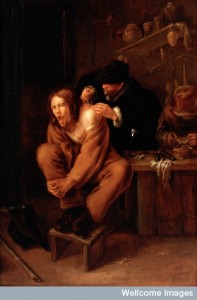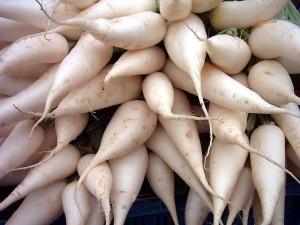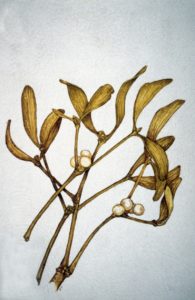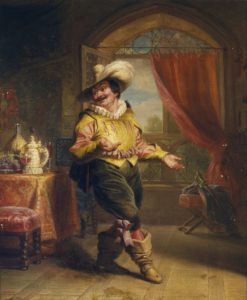Early modern medicine and surgery has been repeatedly described as largely ineffective and often painful. Surgery, in particular, in the era before anaesthesia could be very painful and dangerous. If this was the case, how did men in this period cope with the pain of medical treatment?
Several historians have looked at how ideas of masculinity related to pain and medical care. Alison Montgomery has suggested that as late as 1760 conduct literature, works which espoused the ideals of behaviour, were teaching men that displays of emotion were unmanly and womanish and that pain should be forborne with dignity.i But do we  really think that men stoically suffered their pain in silence or with composed nonchalance. This image from 1649 clearly shows a man undergoing surgery on his back experiencing discomfort and pain. Montgomery also shows in her work that pain was expressed by male patients in their letters to physicians in order to highlight the severity of their disease.ii In addition, Robert Weston has suggested that it was the pain of a disease that meant that aristocratic men were willing to submit their bodies to the authority of surgeons and medical practitioners who could be of a lower social status.iii
really think that men stoically suffered their pain in silence or with composed nonchalance. This image from 1649 clearly shows a man undergoing surgery on his back experiencing discomfort and pain. Montgomery also shows in her work that pain was expressed by male patients in their letters to physicians in order to highlight the severity of their disease.ii In addition, Robert Weston has suggested that it was the pain of a disease that meant that aristocratic men were willing to submit their bodies to the authority of surgeons and medical practitioners who could be of a lower social status.iii
It is clear that in sexual health disorders pain was important for establishing the severity of a man’s disease and for encouraging men to seek help for their problems. As can be seen in many surgical texts, medical practitioners were not oblivious to the pain that their patients felt. Often they recorded a simple statement that the condition was painful, as in this story recorded by Richard Wiseman:
A Gentleman of about Thirty years of age having from his youth been vexed with a fistulous Ulcer in his right Testicle, in progress of time a Tumour arose in the lower Belly over the Pubes, stretching to the right Groin. He consulted Mr. Jarman and my self. The Swelling was hard and painfull, but without Inflammation.iv
In other examples it is clear that pain and inconvenience, often caused by swelling of the part affected, prompted the patient to seek out medical help. Wiseman again wrote of a man with a watery hernia that he had been troubled with for some years, but now it ‘was grown so big, that he was not capable of following his affairs [without] much pain.’v
Pain was not only important for making men seek professional medical help, it was also important to the physicians and surgeon who treated them. The mitigation of pain appears to have been a central feature in their approach to treating male sexual and reproductive disorders. In John Banester’s surgical treatise, he noted that wounds of the privie parts (the genitalia) were ‘most perillous for paine’ and included several treatments, ‘that appeaseth paine, and defendeth the part: which thing is verie requisite in these places.’vi Many other texts also included remedies that eased the pain of these disorders, suggesting that this was an important part of the treatments that men sought.
Not only did surgeons describe remedies designed to mitigate the pain of men’s diseases but in some cases the continued persistence of pain could influence the type of treatment that was attempted, which is some cases could be rather drastic. In 1690 a twelve year old boy was treated for a tumour in his scrotum. However, the treatment was not entirely successful and his practitioners recorded that the ‘Testicle remaining of that Magnitude, might occasion the same Pains and Symptoms he had felt his whole Life … we concluded to amputate it, which was immediately performed. Luckily for this patient, as far as we know from the Surgeon’s text, the amputation was successful and the patient recovered to enjoy a good state of health.vii
So yes early modern medicine and particular surgery was painful, but men did not simply hide their feelings and push through the pain. Instead pain was an important part of the narrative of illness even in disorders that were already threatening a man’s masculinity. Pain therefore, became important to the surgeons who attempted where ever possible to mitigate and ease the pain and suffering of their male patients.
i. Alison Montgomery, (2011) (The) man, his body, and his society: masculinity and the male experience in English and Scottish medicine c.1640-c.1780. Doctoral thesis, Durham University. Available at Durham E-Theses Online http://etheses.dur.ac.uk/3452/, p. 29
ii. Ibid, 157.
iii. Robert Weston, ‘Men Controlling Bodies: Medical Consultation by Letter in France, 1680-1780’ in (eds) Susan Broomhall and Jacqueline Van Gent Governing Masculinities in the Early Modern Period: Regulating Selves and Others (Ashgate: Farnham and Burlington, 2011), pp. 227-246, at p. 237.
iv. Richard Wiseman, Severall Chirurgical Treatises (London, 1676), p.88.
v. Ibid, p. 130
vi. John Banester, The Workes of that Famous Chyrurian, Mr John Banester, in Five Books … (London, Thomas Harper, 1633), p.226.
vii. Observations in Surgery: Being A Collection of One Hundred and Twenty Eight Different Cases. With Particular Remarks on Each, or the Improvement of Young Students. Written Originally in French by Mr. Saviard, Chief Surgeon, and Operator in Midwifery, at the Hospital Dieu in Paris. Translated by J.S. Surgeon, (London, 1740), p.129.
© Copyright Jennifer Evans. All rights reserved.




Surgery has not been a major interest of mine, but I don’t recall any substantial discussion of the use of anodynes of various sorts.
The English word itself, “anodyne,” appears to arrive in the works of the humanist surgeons, from their medieval European predecessors, and in their own works. It does not always apply to the relief of pain, but I give below some 16th-century examples of its use in the context of pain. There are plenty of 17th-century examples.
However, Latin works, whether imported or written by English physicians would provide many examples, and this word is by no means always used in recommendations for pain relief.
A great deal of nonsense has been used about the use of laudanum, as if opium and alcohol were the only painkillers in use. There is often no consideration of what that word means, before Paracelsus, or before Sydenham, and whether that compound would be available to the practitioner or affordable for the patient. There is also little consideration of the stages of a disease, operation, or childbirth when pain was regarded as important, even essential. Instead, we hear of supposed religious beliefs about pain, or the helplessness of early modern medicine.
John Halle’s translation of Lanfranc, on the uses of the root, stalks and seed of rape — “The seade is put amonge anodyne medicines”
Peter Lowe, on diseases of the mouth — ” First, we must vse anodine medicaments, as well to mittigate the great paine, if any be, which commonly happeneth through the acrimonie of the humor, as also to purge the grosse humor, which cleaueth to the internall parts of the mouth, which augmenteth the vlcers.”
William Langham, on henbane — ” It may also be put into all anodyne medicines, to swage paine. The leaues alone, or stampt with parched Barley meale, or mixt with other oyntments, plasters, and medicines swage all paine.”
Peter Lowe, on tumor of the Coddes — “If it turne to suppuration, doe as in others, if by long delay the stone bee altered, the best remedie is amputation: if vehemenr dolor, as often happeneth, apply on the sore cassiafistula or newe Cheese with a little vineger, which are thinges most anodine in such griefes. “
Thank you for this, surgery is a new area for me as well and I was struck by the very vivid presence of pain in many of the surgical observations. This prompted me, as usual, to consider whether there were any gendered elements to pain. Midwives use of understanding pain as a means of asserting authority over the processes of the female body struck me as similar to these cases where the surgeons empathise with their patients pain and try apparently at length to ease it.
I think you are definitely right that we need to consider the language of pain relief more thoroughly, I do see laudanum as one of the element for easing pain in these remedies but it certainly wasn’t the only option.
Anodyne is particularly prevelant in certain parts of the 17th century when adverts for anodyne necklaces – aimed predominantly at child health- were very common. I will keep a further look out for anodyne, I think there are several seventeeth century texts that outline the various types/virtues of drugs and some of these I’m sure discuss anodynes.
Thank you again, this is really very helpful as I develop this idea further.